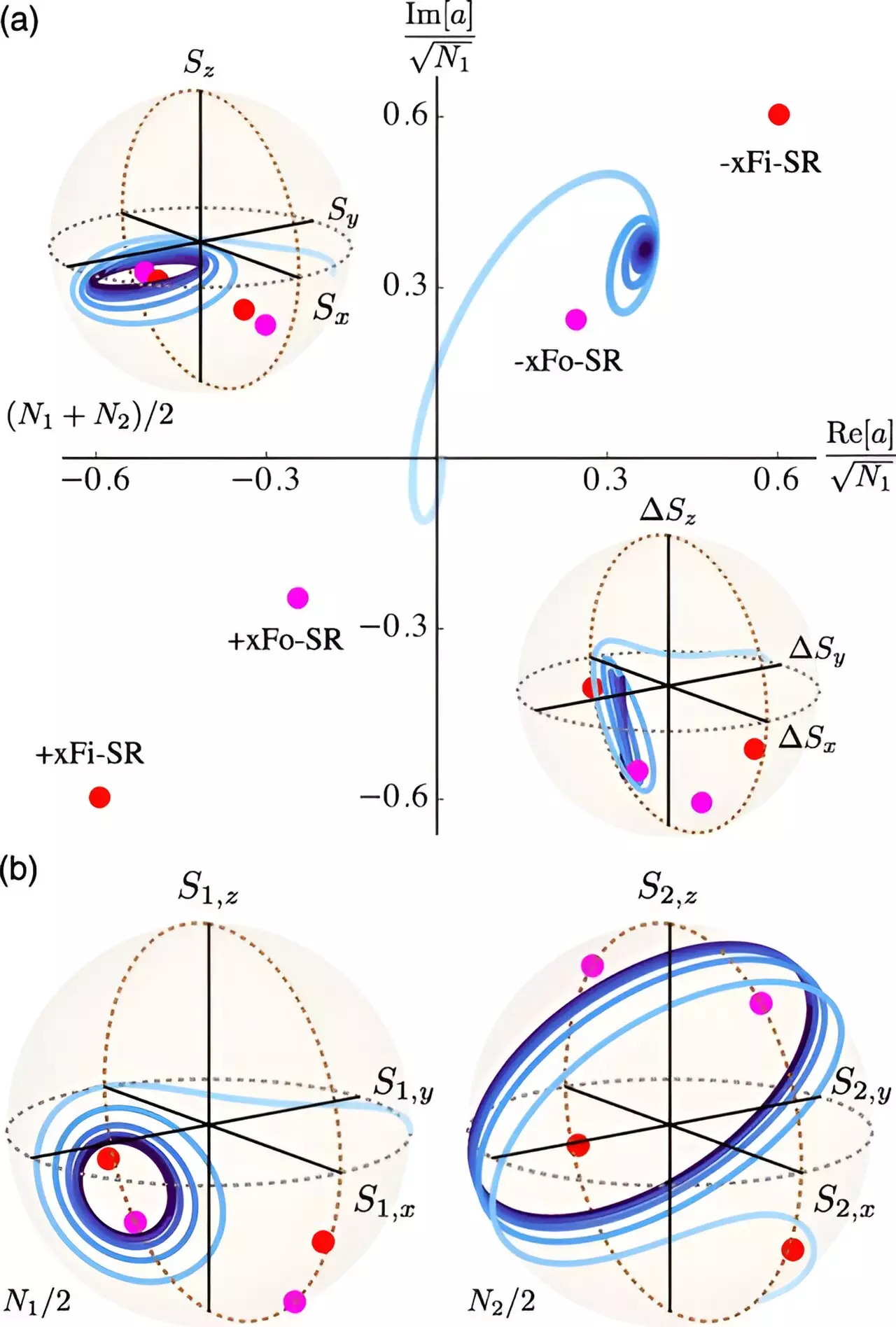Theoretical physicist Farokh Mivehvar has delved into the intricate interaction of atoms emitting light inside a quantum cavity, a device consisting of two high-quality mirrors facing each other to confine light within a small area for an extended period. This research explores the phenomenon of superradiance, a surprising and striking occurrence in quantum optics where atoms behave like synchronized antennae, emitting light more efficiently when close together.
Exploring the Effects of Proximity on Light Emission
Mivehvar’s study focuses on two collections of atoms, each with a specific number of atoms (N1 and N2), within a quantum cavity. When these atoms are located closely together, they synchronize their emissions, leading to superradiant light. However, the challenge lies in understanding how these two sets of atoms can emit light simultaneously.
Cooperation and Competition Among Giant Antennae
Through his theoretical work, Mivehvar identifies two distinct ways in which the giant antennae formed by the atom ensembles interact. In one scenario, the antennae cooperate, creating a single super-giant antenna that enhances light emission. Conversely, in the second scenario, the antennae compete destructively, suppressing superradiant light emission. Notably, when the two ensembles have an equal number of atoms, the emission is entirely suppressed.
Moreover, Mivehvar’s research reveals cases where the giant antennae emit light in a superposition of cooperation and competition, resulting in an oscillatory emission pattern. These findings have significant implications for the field of quantum optics and may potentially impact the development of superradiant lasers in the future.
The model and predictions put forth by Mivehvar can be applied and observed in cutting-edge cavity/waveguide-quantum-electrodynamics experiments. By studying the dynamics of light emission in closely situated atom ensembles, researchers can further explore the complexities of superradiance and potentially harness its efficiency for practical applications.
Farokh Mivehvar’s research sheds light on the intricate behavior of atoms emitting light in a quantum cavity and provides insight into the phenomenon of superradiance in quantum optics. By investigating the interaction of closely located atom ensembles, Mivehvar uncovers the cooperative and competitive nature of giant antennae formed by these atoms, leading to diverse patterns of light emission. These findings not only contribute to the theoretical understanding of quantum phenomena but also open up new possibilities for the development of advanced laser technologies.


Leave a Reply